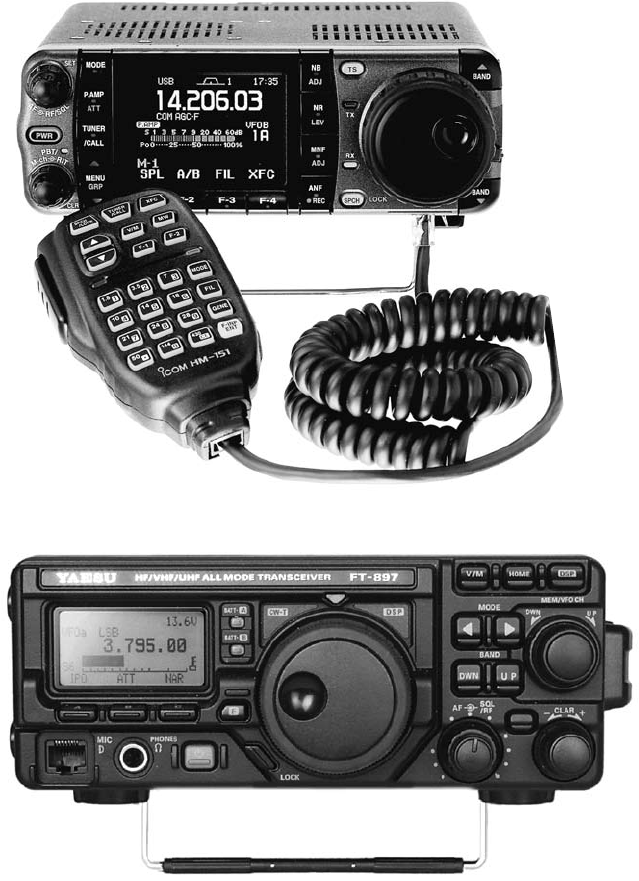Operating instructions

Choosing a Ham Radio 15
hF equiPmeNT
The HF or “short-wave bands” are impor-
tant because of their long-range capability.
When HF conditions are favorable, contacts
around the world are possible without the
need for repeaters or the use of Internet-
based systems, such as IRLP or Echolink.
The traditional amateur HF bands include
160, 80, 40, 20, 15 and 10 meters
(1.8 MHz to 29.7 MHz). In the early 1980s,
the 30, 17 and 12 meter bands (10, 18, and
24 MHz) were added and are sometimes re-
ferred to as the “WARC” bands (in reference
to the World Administrative Radio Confer-
ence at which frequencies are allocated).
The 60 meter band (5.5 MHz) was added
more recently.
Many models of transceivers are avail-
able for the HF bands from portable, mobile
and fixed stations. There is also a
wider price range than for VHF and
UHF radios. As you look through
the catalogs, you’ll see large radios
and small radios with much the same
specifications—this section will help
you understand the real differences.
Portable radios are designed to be
compact, lightweight and power-effi-
cient. They are available with power
outputs of 5 to 100 watts and cover
all of the HF bands—some even
operate on VHF and UHF bands.
Low-power models may have an in-
ternal battery pack. They have fewer
features than most fixed-station
radios and receiver performance is
generally not as good. Their smaller front panels mean they have fewer controls and often
use menus for some functions.
Mobile radios are intended to be operated in a vehicle, but they can make an excellent
base-station radio, especially if you have limited space. These radios consume somewhat
less current than fixed station radios when not transmitting. This may be important if you
intend to use the radio for emcomm and expect to be operating on battery power occasion-
ally. If not used in a vehicle, a dc power supply will be needed. The same concerns about
small front panels and ease of use apply.
Radios for base stations are available in many different price ranges because of the great
differences in performance and features. Some will operate directly from ac power outlets.
Most of the performance differences are associated with the receiver. High-performance
receivers have better selectivity and strong-signal performance as discussed later. Some
radios even have two receivers! It is normally best to start with a basic radio and develop a
feel for what is important to you.
TheICOMIC-7000transceiver.
TheYaesuFT-897transceiver.










